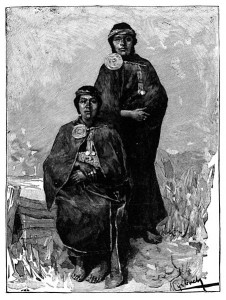Before you study Spanish in Chile or Argentina, it is a good idea to learn a bit about the Mapuche. These indigenous people live in Chile and Argentina. In 2002, the total population was estimated to be 604,349 in Chile and 300,000 in Argentina. This is one of the largest indigenous groups in all of Latin America.
The earliest history of the Mapuche people is still unclear. Experts are divided on the question of the origins of the Mapuche language. Some believe it is related to the Penutian languages in North America, while others find it more similar to Andean languages. Even though the Mapuche lacked a formal government structure, they were impressively able to resist subjugation by the Incan Empire on many occasions.
The Mapuche were also able to repel Spanish conquests in the 16th century. In fact, they seemed to keep the Europeans from returning to certain areas until the late 19th century. The Mapuche used the natural barrier of the Bio-Bio River to remain isolated from the Europeans. This resistance lasted about 300 years and is referred to as The War of Arauco. In the middle of the 17th century, the rulers of Chile and the Mapuche people created a peace treaty.
By the late 1880s, Chile had developed a very large army with the latest military equipment. The Mapuche were overwhelmed. The leaders from the Chilean government forced some of the Mapuche leaders to sign a treaty and agree that they were to be absorbed into Chile. As a result, there were hard times for the Mapuche people including starvation and disease. Their population dropped significantly. Plus, their agricultural and trading economies were destroyed, leaving many Mapuche men and women in poverty. Unfortunately, the poverty has remained until this day.
Sadly, the Mapuche are looked down on as the lowest social class in Chile. They did not fare well under Pinochet’s rule, as their land was privatized and sold to businesses and foreigners. Pinochet also refused to admit that they were indigenous people.
